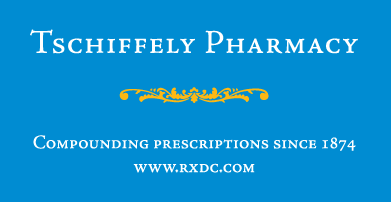
To Buy Amoxil Online Visit Our Pharmacy ↓

Understanding Amoxil: a Peek into Its Composition
Amoxil, a popular antibiotic, serves as a beacon of modern medicine in its battle against bacterial infections. At its core, Amoxil is derived from penicillin and comprises several crucial components that contribute to its efficacy. Teh primary active ingredient, amoxicillin, is a penicillin antibiotic that battles bacteria by halting their growth. It is often paired with clavulanic acid to bolster its effectiveness, especially against beta-lactamase-producing bacteria. This combination creates a synergy designed explicitly to combat bacterial resistance. Despite its simplicity, the chemical composition of Amoxil is meticulously crafted, allowing it to perform with precision and efficiency in medical treatments.
| Component | Function |
|---|---|
| Amoxicillin | Inhibits bacterial growth |
| Clavulanic Acid | Inhibits beta-lactamase |
Target: How Amoxil Identifies Harmful Bacteria

Amoxil exhibits a remarkable hunting prowess, akin to a detective untangling a mystery. It deciphers the bacterial landscape, distinguishing harmful microbes from beneficial counterparts with precision. Teh antibiotic identifies vulnerable targets by recognizing unique proteins embedded in the bacteria's cell walls—proteins remarkably absent in human cells. This clever ability allows Amoxil to engage only the pathogenic intruders, ensuring safety for the body's own microbiota. Through this selective targeting, Amoxil can work without disturbing the balance of essential microorganisms, persuing its mission with surgical accuracy.
The Mechanism: Inhibiting Bacterial Cell Wall Synthesis
Amoxil's ability to protect us is nothing short of a microscopic marvel, halting bacterial invaders in their tracks. At the heart of this process lies Amoxil’s precise targeting and dismantling of bacteria's protective armor. Picture a fortress falling as its walls crumble—similarly, Amoxil cleverly disrupts the construction of bacterial cell walls, making them defenseless and vulnerable. This magical intervention, fueled by amoxil, ensures bacteria can no longer flourish and multiply, providing potent protection to the human body. Thus, its profound impact has long been a cornerstone in battling infections.
The Role of Beta-lactam Ring in Action

In the realm of antibiotics, Amoxil holds a unique mechanism of action, primarily due to its beta-lactam ring. This ring is the cornerstone, deftly binding to proteins in bacterial cell walls, disrupting their construction. As it integrates into the wall, the ring prevents bacteria from synthesizing a proper protective layer, rendering them defenceless. A bacterium's growth is halted, and eventually, the organism cannot withstand exterior pressures, leading to its demise. This potent action is why health professionals frequently recomend Amoxil for bacterial infections.
Amoxil’s Spectrum: Broad or Narrow Effectiveness?
When considering Amoxil’s effectiveness, its broad-spectrum capabilities come into the spotlight. This antibiotic is specially engineered to combat various bacterial strains, including Gram-positive and Gram-negative bacteria. Imagine a tool finely crafted to tackle multipurpose tasks, providing versatility in medical treatments. While Amoxil is praised for its expansive reach, it's important to know the boundaries of its influence to prevent bacterial resistance. Understanding which infections Amoxil can effectively manage allows healthcare professionals to maximize its utility while minimizing potential misuse.
| Bacterial Type | Effectiveness |
|---|---|
| Gram-positive | High |
| Gram-negative | Moderate |
Balancing the need between a broad spectrum and targeted action is crucial. Often, antibiotics that are too general can lead to widespread resistance, rendering them less useful over time. It's akin to using a broad brush where precision might be essential. Occassionally, narrowing the focus ensures Amoxil remains sustainable, providing tailored solutions for specific infections while reducing collateral impact on beneficial bacteria. Therefore, it's essential to carefully evaluate each clinical case to acheive optimal outcomes.
Overcoming Resistance: Strategies for Sustainable Use
In the ongoing battle against antibiotic resistance, it's crucial to arm Amoxil with well-planned strategies that ensure its effectiveness for future generations. One of the principal tactics is reducing unnecessary prescriptions. By avoiding the habit of prescribing Amoxil for viral infections, which it cannot treat, healthcare professionals help preserve its potency. Also, patients should be educated on the vital importance of completing their dosage regimens to prevent resistance from taking hold. Innovatively, medical researchers are working to combine Amoxil with other agents to extend its shelf life and scope, thereby creating a formidable frontline defense against pesky bacterial invaders.
For a deeper dive into the subject, consider reading the following resources: NCBI: Amoxicillin: Past, Present, and Future and ScienceDirect: Advances in Amoxicillin Research.